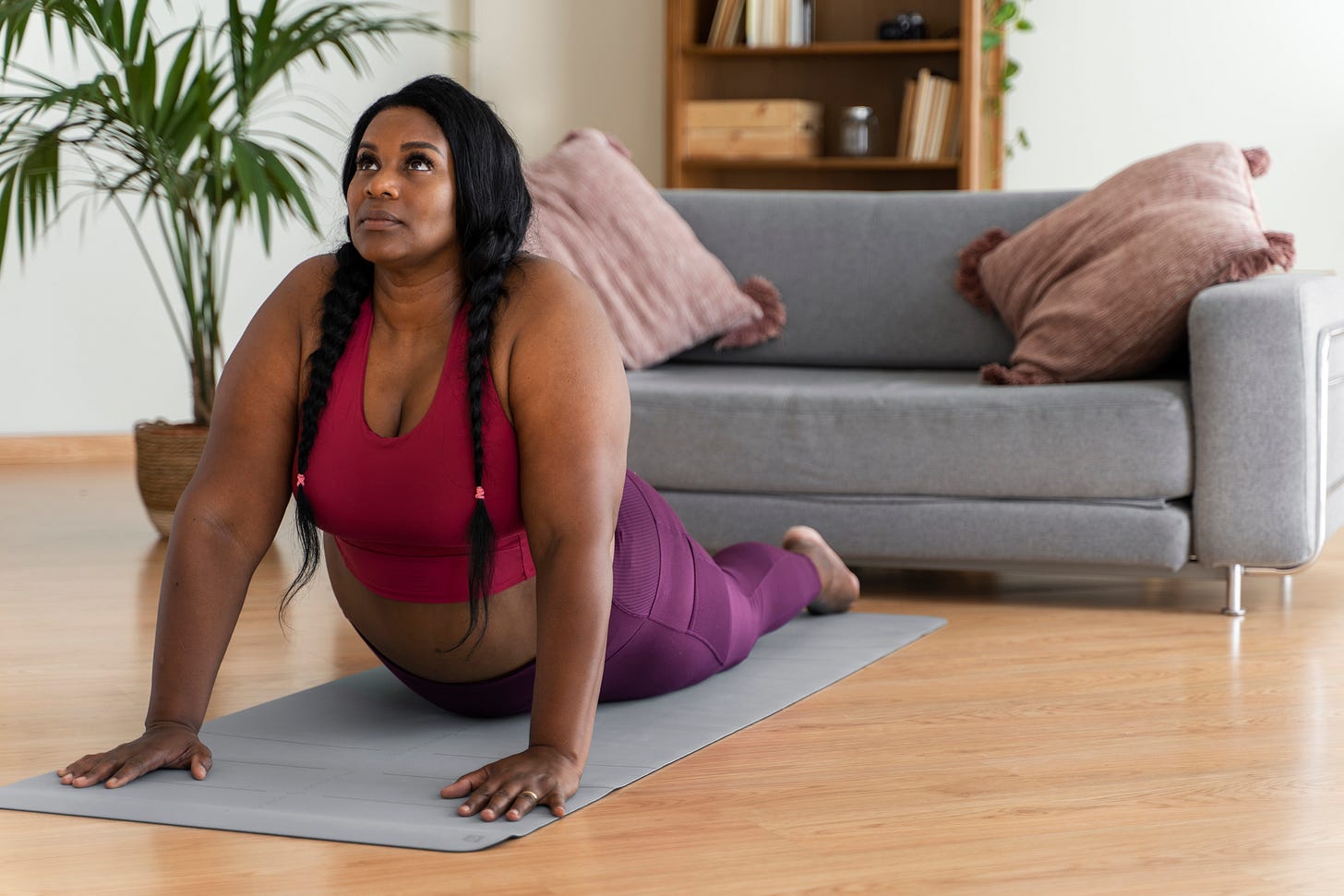Do NOT Overexercise if You’re in Perimenopause (Trust Me on This One)
I’m gonna say something that might ruffle some feathers:
Working out harder and longer is not the answer in perimenopause.
I know. We were all sold this story that if you want to lose weight, have more energy, or feel “healthy,” the formula is simple: eat less, exercise more.
But sis… in perimenopause, that formula backfires. Big time.
My Own Wake-Up Call
There was a time when I thought two-a-day workouts were the move.
Spin class in the morning, hot yoga at night, and maybe a “little” jog around my neighborhood squeezed in somewhere between.
I thought I was doing everything right—being “disciplined,” working off my stress, keeping my body strong.
But here’s what really happened:
My body was absolutely NOT changing
My sleep was a hot mess
My mood was unpredictable (like, cry-then-yell type unpredictable)
And instead of feeling strong and energized, I was dragging myself through the day like I’d been hit by a bus
It finally clicked: I wasn’t giving my body what it needed. I was doing THE MOST.
Why Overexercise Makes Perimenopause Symptoms Worse
Here’s the science-y-ish truth:
During perimenopause, your hormones are fluctuating like crazy—especially estrogen and progesterone. These shifts affect your stress response, sleep, and metabolism.
When you push your body too hard with intense exercise, you spike your cortisol (stress hormone). And guess what?
High cortisol = more belly fat storage
High cortisol = worse sleep
High cortisol = more anxiety + mood swings
Basically, your body thinks you’re running from danger when you’re just trying to squeeze in another HIIT class.
And instead of balancing your hormones, you’re throwing more fuel on the fire.
The Better Way to Move in Perimenopause
Now don’t get it twisted. I’m not saying don’t move your body. Movement is non-negotiable for your physical and mental health.
But in this season of life, the goal shifts. Instead of trying to “burn calories,” you want to move in ways that:
✨ Lower stress (aka lower cortisol)
✨ Build strength + protect your bones
✨ Support mobility + flexibility
✨ Boost energy instead of drain it
That’s the magic combo.
Here’s what that can look like:
Yoga (yin, restorative, gentle flow): Calms your nervous system, reduces hot flashes, improves sleep.
Strength training (2–3x/week): Helps with muscle loss + bone density, keeps your metabolism humming.
Walking in nature: Easy, grounding, and surprisingly powerful for regulating stress hormones.
Dance or fun movement: Keeps joy in the body, which is just as important as calories burned.
What You Need to Hear
If you’ve been feeling like your body is betraying you—it’s not.
She’s just asking for something different.
Your 20-year-old body might have thrived on HIIT 5x a week. Your 40+ perimenopausal body? Baby, she’s begging you to slow TF down, get stronger in smarter ways, and actually rest.
And when you listen?
Your symptoms ease.
Your energy returns.
You stop feeling like you’re fighting a losing battle with your body.
My Challenge to You
This week, try cutting your high-intensity workouts in half and replacing them with one restorative yoga session or a walk outside.
Notice how your body feels after.
Notice your sleep.
Notice your mood.
I promise—you don’t have to grind yourself into the ground to feel good. You just need to move differently.
Perimenopause is not the season of life to punish your body. It’s the season to partner with it.
So trust me on this one: Do NOT overexercise.
Your body will thank you with more energy, better sleep, and fewer symptoms.
And yes, you’ll still feel strong and sexy without breaking yourself down.
👉 Want to learn how to move in ways that actually support your perimenopausal body? Join me for Yoga for Menopause. We’ll balance, restore, and move smarter—not harder.





